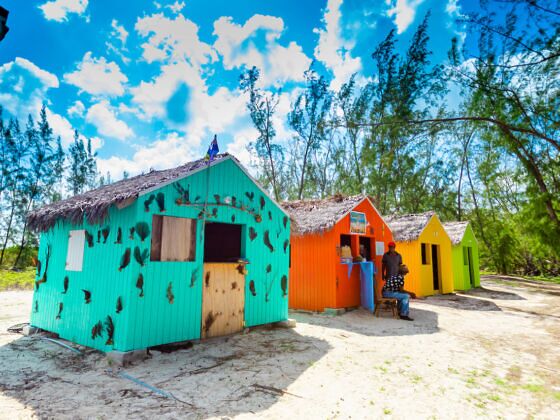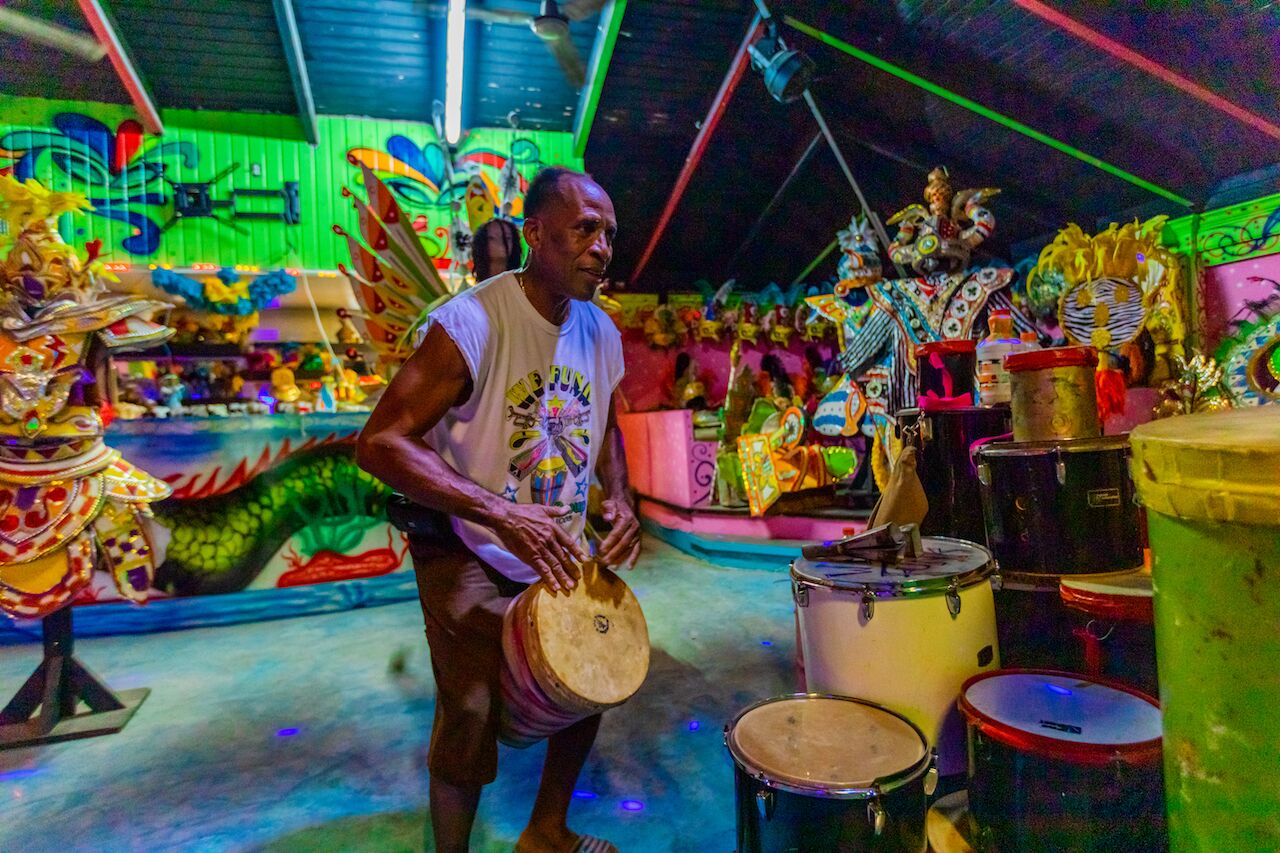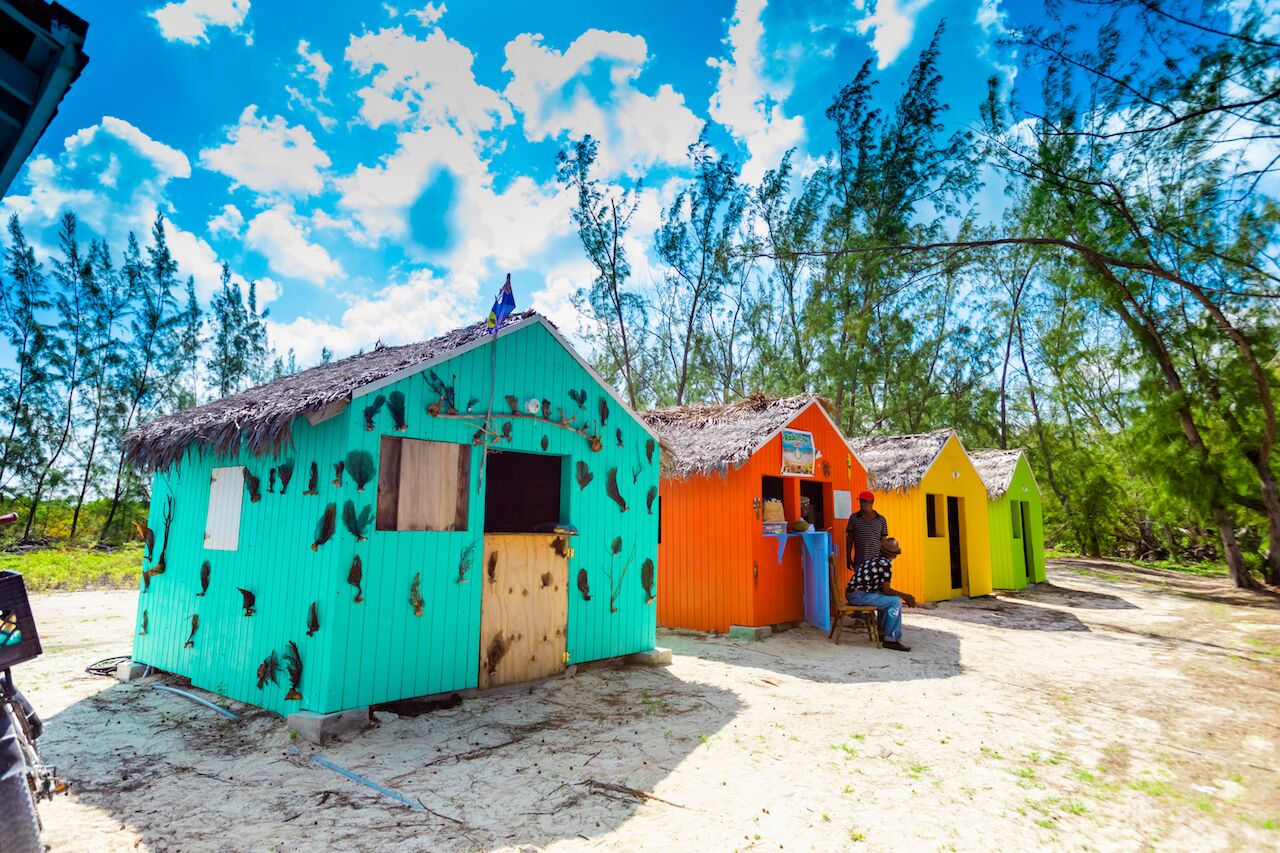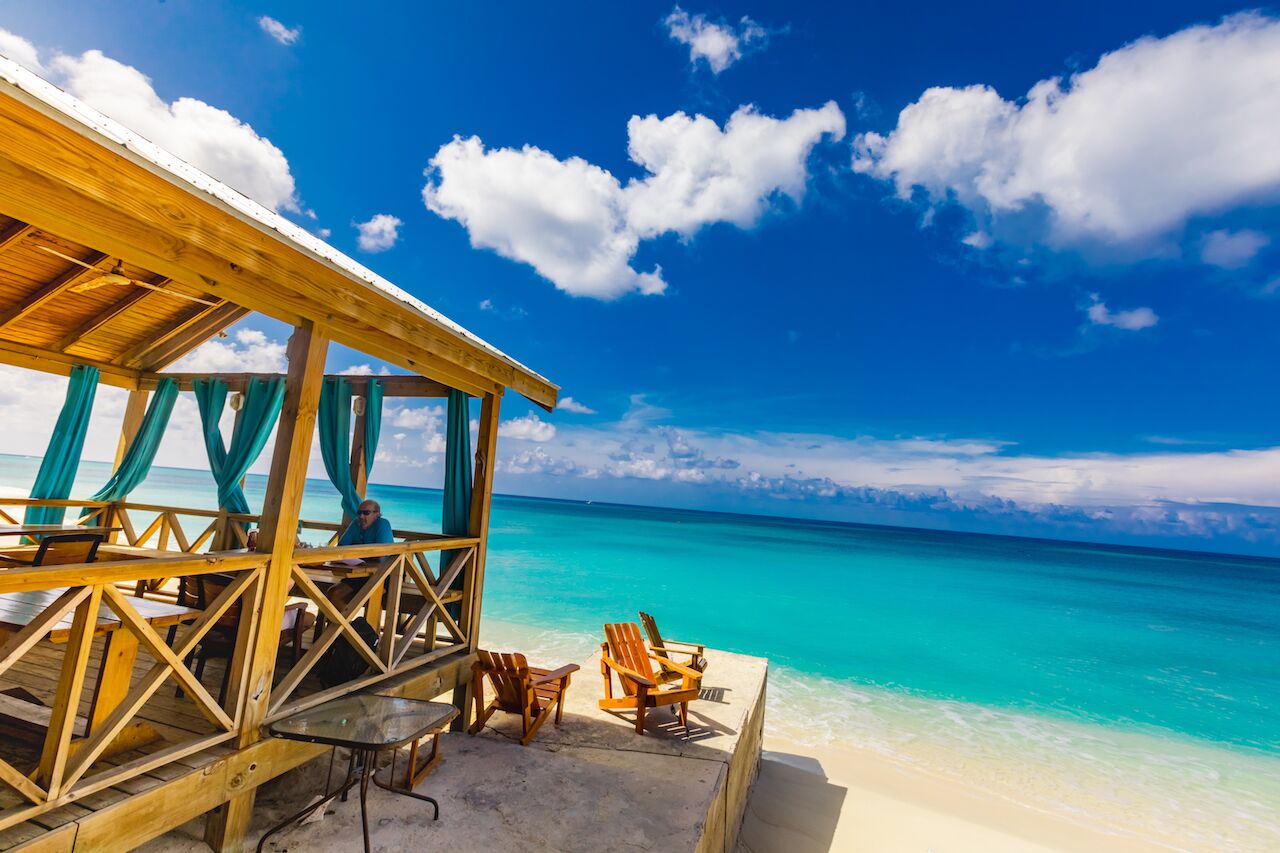TO THE BEST OF anyone’s knowledge, the Junkanoo Museum just down the road from the Providenciales airport is the only museum in the world that announces your arrival with a long blast from a conch shell.
It’s the customary welcome from Kitchener Penn from within the lobby of his museum, surrounded by elaborate Carnival costumes. Penn is the leader of the We Funk Junkanoo Band, and right now, he’s blowing a traditional fisherman’s horn once used by local mariners to announce their arrival before the advent of radio.







